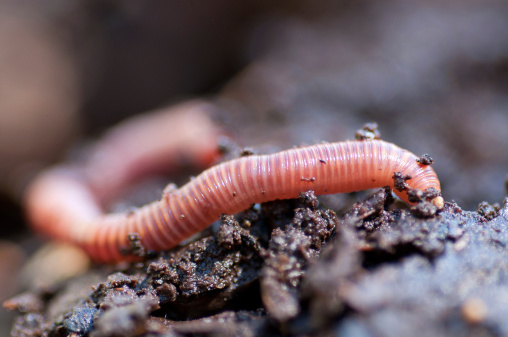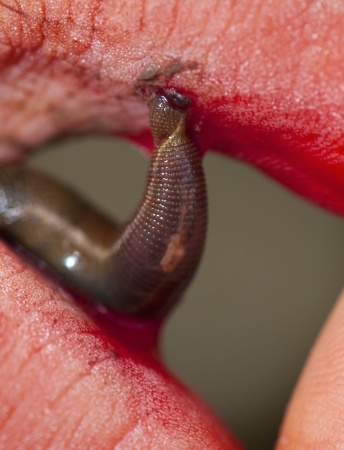Annelids are classified according to their body parts. Scientists determine what class Annelids are categorized into based on whether or they have parapodia and/or setae. In the activity below, click each tab to learn about the different classes of Annelids.
Polychaetes
Oligochaetes
Hirudineans

Polychaetes are marine worms and are the largest group of segmented worms. They have a very striking appearance with iridescently colored bodies. They have a distinct head region as indicated in the image. The distinguishing feature of Polychaetes is that they have a pair of parapodia that occurs on most of their segments. Their parapodia then have setae, which help them to swim, burrow, or crawl.
How are parapodia different from setae? Think of the answer, then click Show Me to see if you are correct.

Parapodia are fleshy appendages shaped like paddles, whereas setae are very thin bristles.

The Oligochaetes are Annelids that lack parapodia and have only a few setae on each segment. Earthworms, such as the one pictured, fall into class Oligochaeta. Although Oligochaetes lack a head region and have no eyes, they have sense organs on both ends of their body, which can sense light, touch, and moisture.
Earthworms are of special importance to agriculture because they are a part of any healthy soil. Earthworms eat their weight in soil every day, creating tunnels which aerate (allow important gas molecules like oxygen to penetrate) the soil. The earthworms' feces are also very important because as a rich fertilizer. In what two ways are earthworms beneficial for soil? Think of the answer, then click Show Me to see if you are correct.

Earthworms aerate and fertilize soil.

Hirudinea consists of segmented worms that are mostly predators and parasites. Most of these worms are parasites of vertebrates and crustaceans. Leeches fall into the class of Hirudinea. Hirudineans have suckers at both ends of their body that help them attach to their hosts. In the case of leeches, the sucker attaches to the skin of a vertebrate and sucks out the blood of its host, as pictured in the image. Hirudineans have no setae nor parapodia.
